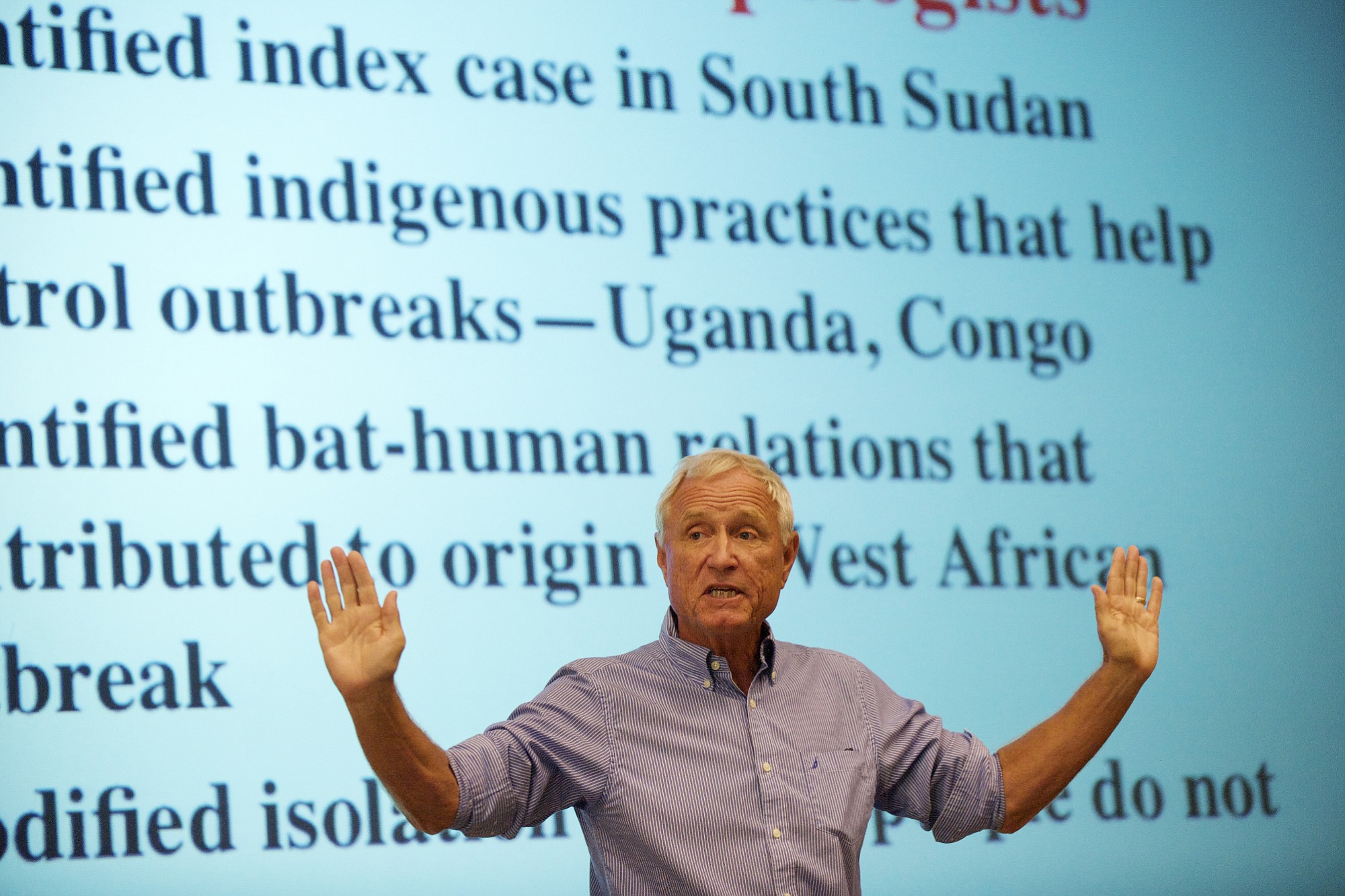Take the terror of the incurable and mostly misunderstood disease. Now add the local landscape of poverty, political corruption, war, widespread death and strangers from overseas appearing in whole-body hazmat suits. Is it any wonder the locals are gripped by their natural human instinct to fight or flee?
That’s exactly what happened in the American colonies and the young nation in the 1700s and 1800s during historic outbreaks of diseases including cholera, yellow fever and typhus, Barry Hewlett said: Authorities were slow to catch on and catch up with the outbreak, while citizens tended to deny it was real, to head for the hills and to blame “outsiders.” During the Spanish flu epidemic of the early 1900s, he said, even some of the doctors fled.
Panic and misunderstanding over disease “have been right here,” he concluded. “The ‘outbreak narrative’ in the U.S. is not different.”
The Hewletts are co-authors of a 2007 book called “Ebola, Culture and Politics: The Anthropology of an Emerging Disease.” They were asked by the WHO to figure out why people flee the hospital, the ambulances and the health workers trying to save them.
‘You want to touch’
Barry Hewlett gave a quick primer about Ebola itself. It was first identified in 1976 in what’s now called the Democratic Republic of the Congo (then Zaire), but the virus may be much older than that, he said. The death rate is somewhere between 70 and 90 percent. The “reservoir” of the disease is very likely bats.
Ebola resembles HIV in that it is transmitted through bodily fluids including blood. Unlike HIV, it attacks “every cell,” not just the immune system, Barry said. Also unlike with HIV, the fluids that spread Ebola include saliva and sweat.
The symptoms start out just like “a bad flu,” he said. “That’s why it’s so difficult to identify.” A diagnosis requires sending blood samples to an extremely secure, specialized laboratory. Meanwhile patients are contagious when they start presenting symptoms, he said; at that point, chances are, they only have a week to 10 days left to live.
Of course, when patients start presenting symptoms, their family and loved ones are naturally drawn to comfort and care for them.
“If you have a loved one, you want to touch. You want to care,” said Bonnie Hewlett. “Imagine you’re told not to touch them.”
That’s how Ebola starts spreading through whole families — although, Barry Hewlett pointed out, the disease tends to be “biased” against women, with more fatalities among females than males.
Next in line to get sick are health workers who don’t have the luxury of super-sanitary conditions to work in, he said. And in the end, families want to bury their dead in traditional, respectful and loving ways; this too involves plenty of touching and handling.
“This is how it amplifies,” Hewlett said.
Widespread poverty
Larger factors contribute to Ebola’s current epidemic. Previous outbreaks that the Hewletts have fought were among forest people in central Africa, whose villages were relatively homogenous, isolated and not very populous; the current outbreak is more urban, spreading through cities in the coastal nations of Liberia, Sierra Leone and Guinea. The affected people are incredibly diverse, speaking many dozens of different languages, and they’ve suffered years of civil war, resulting in widespread poverty and lack of public health infrastructure including clean water and sanitation.
“Disease thrives where poverty is,” Bonnie Hewlett said.
The people living under those conditions may catch the news — that they are being blamed for spreading the disease through their own ignorance or backward cultural practices — and react with hatred and suspicion, Bonnie Hewlett said.
Some continue to believe that the disease is sorcery, but that impression is starting to fade with evidence, she added. Sorcery usually means something perpetrated by one individual upon another; the current situation is now proving too widespread, fast-moving and linked to physical contact even for people who believe in sorcery to conclude that that’s what this is.
But it’s still understandable that they would fear clinics, hospitals and the special isolation units where Ebola sufferers are treated or only quarantined. During a previous outbreak in Uganda, Bonnie Hewlett said, patients disappeared into tiny isolation units that were covered with tarps; their families watched them go in and never come out again.
“They thought the health workers were in the body parts business,” she said.
Transparency — literal and figurative — makes all the difference. See-through plastic means the families can see and communicate with their loved ones in isolation, and one huge trust issue has been resolved.
Turning the corner on Ebola will mean working in genuine partnership with local people and putting their own knowledge and wisdom to work, Barry said. Bonnie added that she only hopes the developed world has the patience to see the whole problem through.
“My biggest fear … is that we’ll grow fatigued and we’ll close up our hearts and our wallets,” she said.




